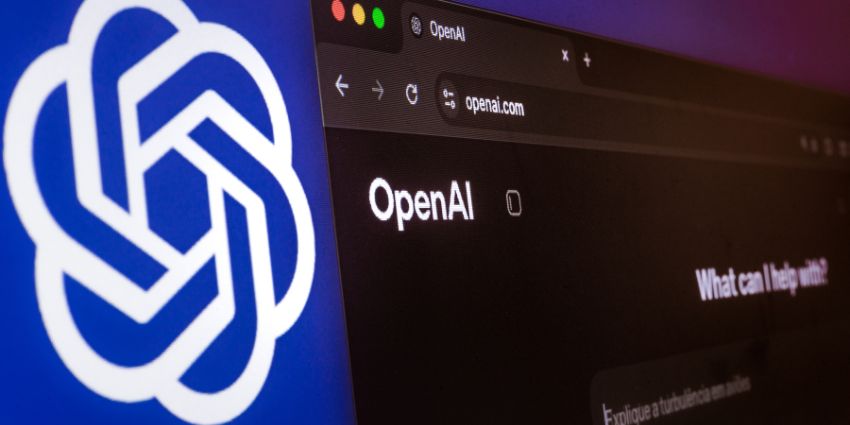The ability to adapt to a changing business landscape has always been a coveted trait for any enterprise.
However, when the Covid pandemic caught the world off guard, this ability to adapt became essential for enterprises.
As the world left lockdown, some lingering parts of that time remained: remote work. Thus, printing and imaging solution enterprise Lexmark was left with a new reality that their current setup was not best placed to accommodate.
“Our employees needed seamless communication tools that worked both in the office and remotely, supporting our evolving hybrid work model particularly coming out of the pandemic,”
Vishal Gupta, Lexmark’s Global CTO, CIO, and SVP Connected Technology at Lexmark told UC Today.
Yet changing a whole global enterprise’s communication solutions is no easy task, especially one that relied on 7,000 Cisco hard phones across its offices globally.
“Prior to the Teams migration, Lexmark primarily relied on a traditional Cisco Unified Communications Manager (CUCM) infrastructure. This included a significant deployment of approximately 7,000 Cisco hard phones across our offices globally, along with associated infrastructure for call routing, voicemail, and conferencing,” Gupta explained.
Yet, seeing the limits of their setup, Lexmark set about switching their company-wide solution to Teams and accomplished the huge task of reducing their hard phone usage by 87% in the process.
Identifying Challenges and Selecting the Right Solution
Although the transition to hybrid work was a driving factor, additional issues were arising with Lexmark’s use of its Cisco system. The infrastructure was not only failing to support the flexibility required by their evolving work environment but was costly to maintain.
“The cost of maintaining the Cisco infrastructure was substantial, including hardware maintenance, software upgrades, and dedicated IT support,” Gupta stated. Even beyond that, Gupta explained how “the integration with other collaboration tools was limited,” which hindered internal productivity and efficient workflows.
Migration is no small task to undertake, and Gupta did consider keeping the current Cisco systems to avoid any potential disruption.
“While augmenting the existing Cisco system was considered, the Cisco system was reaching its end-of-life in some areas, and the cost of upgrading and integrating it with modern collaboration tools would have been significant.”
Faced with these mounting challenges, Gupta said they agreed a change had to happen. This is when the company began evaluating what they needed from their new system and who they thought could best offer that.
“Our evaluation process was thorough and involved a cross-functional team including IT, business users, and security representatives,” he said.
“We then evaluated several leading platforms, including Webex and Teams, based on factors such as total cost of ownership—including licensing, implementation, and ongoing maintenance; integration with existing infrastructure—particularly our Microsoft 365 environment; user experience—meaning ease of use and adoption by our employees; security—ensuring compliance with our security policies and data privacy regulations; scalability—the ability to scale the solution as our business grows; and vendor support—the level of support and expertise offered by the vendor.”
Gupta explained how they then conducted extensive proof-of-concept testing with each platform involving a representative group of users from different departments to gather feedback on user experience.
“We also conducted detailed comparisons of features, functionality, and pricing,” he explained.
“Ultimately, Teams emerged as the clear winner due to its seamless integration with our existing Microsoft 365 environment, its comprehensive feature set, and its competitive pricing.”
This strategic transformation would not only reshape Lexmark’s internal communications but fundamentally alter how the company approached collaboration across its global footprint.
Executing a Strategic Migration to Minimize Disruption
With the decision made to transition to Teams, Lexmark focused on implementing a migration strategy that would minimize disruption to their global operations. They developed a phased approach that allowed for testing, feedback, and gradual adoption rather than a high-risk cutover.
“The migration was carefully planned and executed in phases to minimize disruption,” Gupta explained.
The process began with planning and design—defining the project scope, selecting appropriate Teams licensing, and designing the migration architecture. This was followed by a pilot deployment to a small user group for testing and feedback collection.
The third phase involved a carefully orchestrated rollout to the rest of the organization—strategically beginning with departments most receptive to change.
This approach created internal champions who could help drive adoption in more change-resistant areas of the business.
Throughout the process, comprehensive training and support were provided to ensure users could effectively utilize the new system.
“To minimize disruption, we provided ample training and support [and] communicated regularly with users,”
noted Gupta.
Equally, to assuage user concern—keep everyone onside—and make sure that any lingering information on old systems was not lost overnight—the plan allowed employees to use both old and new systems in parallel for a period of time.
This overlap period proved critical in easing the transition—giving users time to become comfortable with Teams before their Cisco tools were decommissioned.
Despite careful planning, the migration wasn’t without challenges. User adoption presented a significant hurdle, requiring Lexmark to invest heavily in training and clear communication about Teams’ benefits.
Network bandwidth also proved problematic as increased use of video conferencing strained their existing infrastructure—necessitating targeted upgrades.
“Integrating Teams with some of our legacy systems required custom development,”
Gupta explained.
“We worked closely with Microsoft and our integration partners to address these challenges.” This collaboration proved essential in overcoming technical obstacles throughout implementation.
Realizing Benefits Now and for the Future
Since implementing Microsoft Teams, Lexmark has observed significant measurable improvements across multiple dimensions of the business.
“We’ve now reduced our hard Cisco phone count by 87%, a testament to the success of the migration,” Gupta stated. That’s because much of Lexmark’s communications can now be carried out through Teams.
“We now use Teams for both internal and external calling—leveraging soft clients on both phones and desktops,”
he explained.
This reduction has translated directly into cost savings—eliminating expensive Cisco hardware/software licenses.
Beyond financial benefits, Lexmark has experienced substantial gains in workforce productivity and collaboration.
“Teams has become a central hub for our communication and collaboration and is fostering a more connected and productive workforce,” Gupta explained.
The streamlined communication tools provided by Teams have fostered a more connected work environment, making it easier for employees to share information and work together effectively despite physical distance.
Employee satisfaction has also improved, with staff appreciating the flexibility and capabilities of the new system.
Crucially, it not only addressed issues experienced now, but it gives them the foundations to adapt to what the future might hold.
“Teams provides the foundation for a modern, agile workplace,” Gupta explained.
“Its cloud-based architecture ensures we can easily scale and adapt to changing business needs. We’ve also upgraded our conference rooms to have one-touch Teams capability along with video hardware, further supporting this flexible approach.”
Although the transition is now up and running and yielding results, looking back, there is always, inevitably, room for improvement.
Despite the extensive work done with staff training and management, Gupta felt that still represented one of the things he would go back and change.
“Looking back, I would have invested even more in user training and communication upfront. While we provided comprehensive training, some users still struggled to adopt the new system.”
For organizations embarking on their own UC transformations, Gupta recommends thoroughly assessing specific business requirements and selecting solutions that align with those needs.
Careful planning with clear timelines and communication strategies is essential, as is a significant investment in user training and support.
Regular communication, stakeholder engagement, and robust change management are also critical success factors.
Lexmark’s journey from a traditional Cisco infrastructure to a modern Microsoft Teams environment demonstrates how the right UC platform can transform not just how employees communicate but how an entire organization operates.
By embracing a comprehensive solution that supports its hybrid workforce, Lexmark has created a more flexible, cost-effective, and collaborative communication ecosystem that not only meets their needs, but augments it, and all the while keeping them agile enough to adapt to the future.







